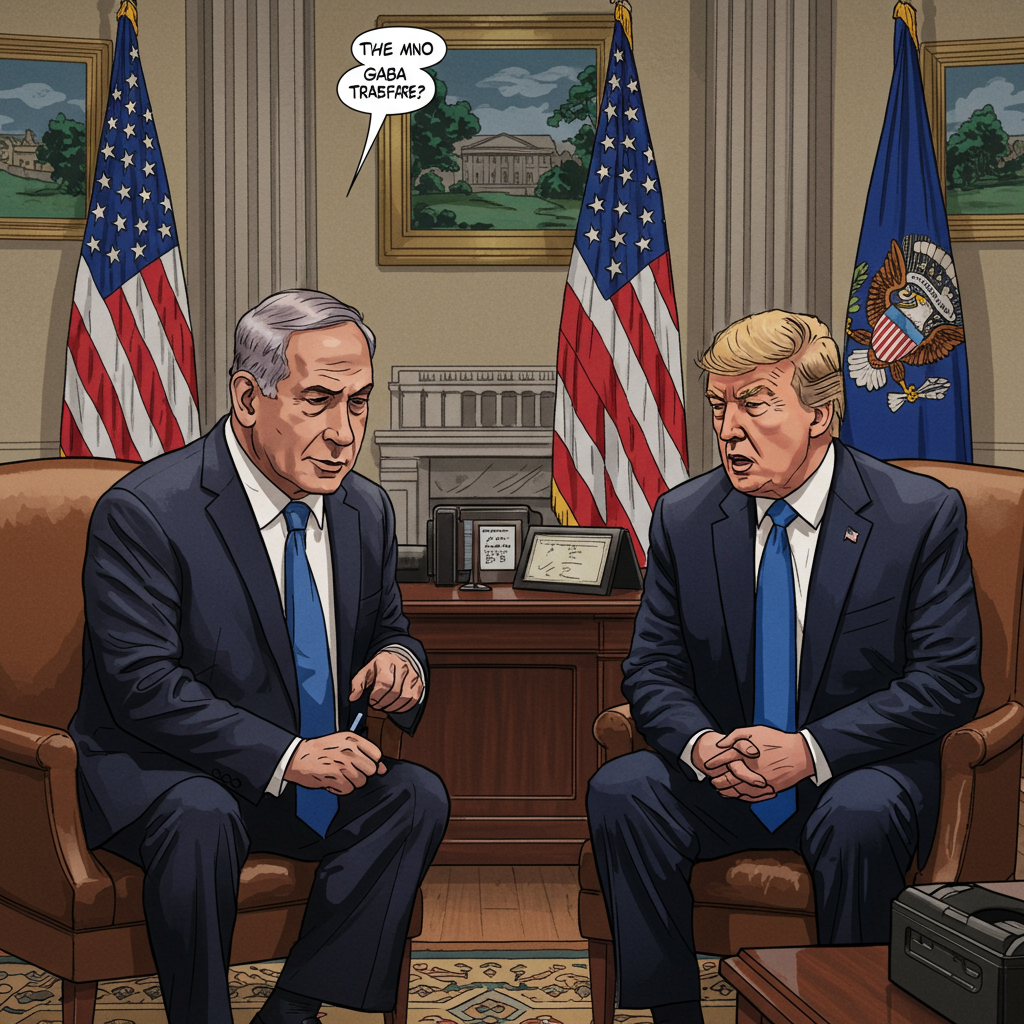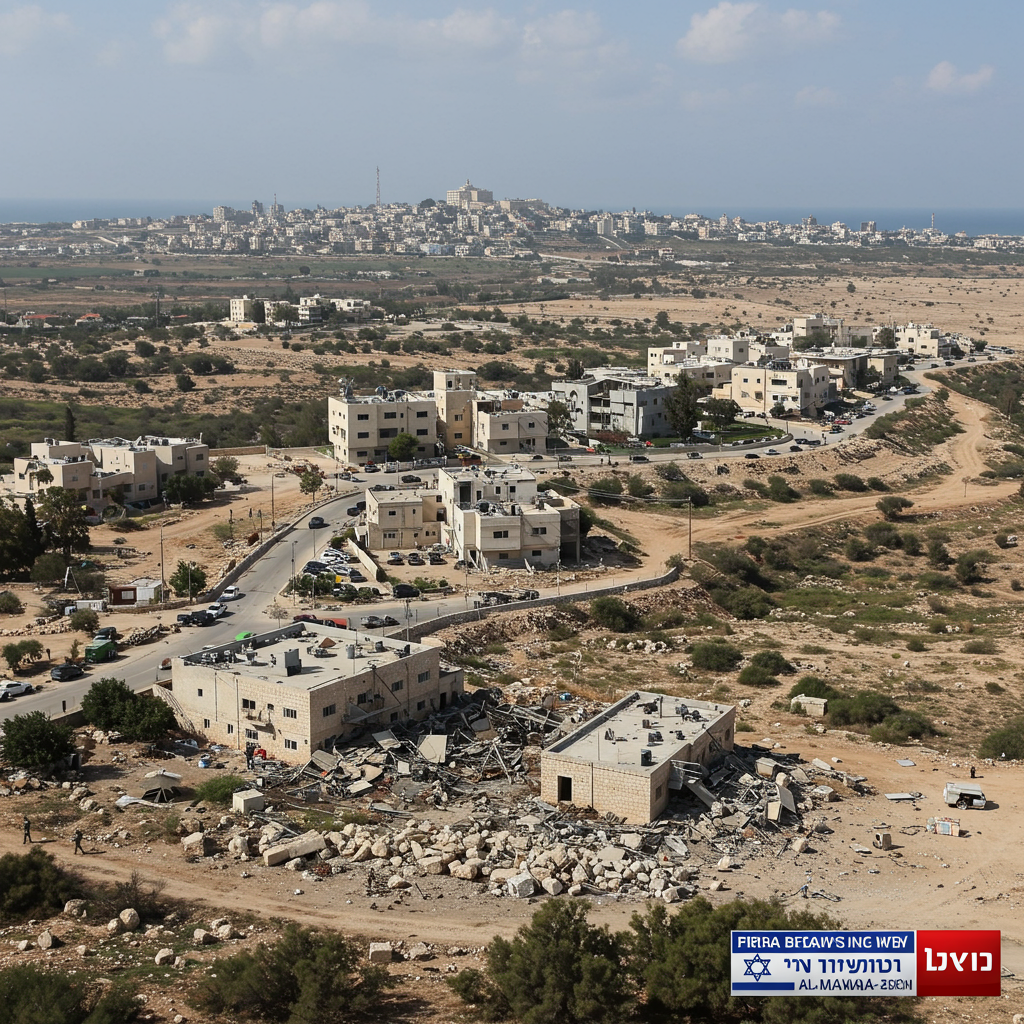Amid escalating tensions and a deepening humanitarian crisis, crucial indirect talks aimed at securing a ceasefire in Gaza and the release of hostages have resumed in Doha, Qatar. This diplomatic push coincides with Israeli Prime Minister Benjamin Netanyahu’s significant visit to Washington D.C. to meet with US President Donald Trump. The confluence of these two events has ignited cautious optimism, yet major hurdles persist as negotiators attempt to bridge fundamental disagreements that have plagued previous efforts.
Sources close to the discussions describe a “serious atmosphere” in Doha, where Israeli negotiators are engaged in proximity talks with mediators from Qatar and Egypt, who are facilitating contact with hamas officials also present in the Qatari capital. The goal remains centered on achieving a framework deal that would exchange Israeli hostages held in Gaza for Palestinian prisoners incarcerated by Israel, alongside a temporary cessation of hostilities. This renewed diplomatic momentum arrives almost 22 months into a conflict that has devastated the Gaza Strip and caused immense suffering.
Deep Divisions Cloud Path to Agreement
Despite a recent proposal supported by the US and Israel, which Hamas reportedly met with a “positive spirit,” substantial gaps between the parties continue to hinder progress. A key sticking point remains Hamas’s insistence on conditions Israel has previously deemed unacceptable. These include a guarantee of a complete end to the war and the full withdrawal of Israeli troops from Gaza at the conclusion of any truce period.
Hamas’s specific demands, according to sources close to the group, also include the daily entry of 600 aid trucks carrying a wide range of supplies – food, medicine, fuel, and construction materials – into Gaza. They are calling for the urgent reconstruction of vital infrastructure like hospitals and water facilities. Another significant demand is the immediate reopening of the Rafah crossing with Egypt to allow over 20,000 wounded and sick Gazans to leave for essential medical treatment abroad. Hamas has also pushed for all humanitarian aid to be delivered solely through UN agencies, particularly UNRWA, criticizing the US-linked Global Humanitarian Foundation (GHF).
Israeli Positions Remain Firm
Prime Minister Netanyahu, even as he departed for the US, reiterated Israel’s core objectives in the conflict. These three missions are defined as: securing the release and return of all hostages, living and deceased; destroying Hamas’s military and governing capabilities in Gaza; and ensuring that Gaza can no longer pose a security threat to Israel.
Netanyahu stated he has given his negotiating team in Qatar “clear instructions” based on terms Israel finds acceptable. The Israeli delegation in Doha includes high-level security and political officials, underscoring the importance placed on this round of talks, despite official caution that a final agreement is not imminent due to the persistent differences. Israel’s stance on maintaining military pressure and rejecting a permanent, immediate end to hostilities before achieving its stated goals runs directly counter to Hamas’s core demands.
The Washington Connection: Trump’s Role
Netanyahu’s meeting with President Trump in Washington is highly anticipated. Netanyahu expressed hope that his discussions with the US President could “help move things forward” regarding the ceasefire and hostage deal efforts. While in Washington, Netanyahu also planned to thank Trump for his “unwavering support” and discuss expanding regional peace initiatives, potentially leveraging recent geopolitical shifts.
President Trump has voiced optimism about the potential for a “Gaza deal” developing soon, though he acknowledged the fluid nature of the situation. The US has been actively involved in mediating, supporting the framework proposal that formed the basis for the current talks. Whether President Trump can exert sufficient influence during his meeting with Netanyahu to encourage flexibility on critical issues, particularly those related to ending the war, remains a central question hanging over the diplomatic efforts.
Domestic Pressures Mount on Both Sides
Both Israeli and Hamas leaders face significant internal pressures regarding potential concessions. In Israel, families of the approximately 50 remaining hostages, believed to include about 20 alive, continue to mount public demonstrations demanding the immediate return of all captives. Recent protests, including large rallies in Tel Aviv, have specifically called on Netanyahu to reach a deal. Some families have expressed anger over discussions of phased release plans, viewing the potential selection process as morally unacceptable.
Conversely, Prime Minister Netanyahu must navigate fierce opposition within his own government from hardline figures like National Security Minister Itamar Ben Gvir and Finance Minister Bezalel Smotrich. These ministers staunchly oppose ending the military campaign before Hamas is completely eliminated, posing a potential challenge to any agreement that falls short of that goal. On the Hamas side, leaders face pressure to secure terms that not only lead to a ceasefire but also address the dire humanitarian situation and lift the blockade on Gaza, while also securing a significant prisoner exchange.
Gaza’s Enduring Humanitarian Catastrophe
The backdrop to these intense negotiations is the devastating humanitarian situation in Gaza. Over two million Palestinians remain affected by shortages, displacement, and ongoing violence. Aid delivery has been a persistent challenge, exacerbated by blockades and security issues near distribution points. While Israel has partially lifted an eleven-week blockade on aid, leading to a US- and Israel-backed group, the GHF, taking a lead in food distribution, major UN agencies and aid groups have reportedly been hesitant to cooperate with the GHF. The UN human rights office has tragically reported hundreds of deaths among people waiting for food at distribution points.
The conflict’s human toll continues to climb. According to the Hamas-run health ministry in Gaza, at least 57,338 Palestinians have been killed since Israel’s military campaign began in response to the October 7, 2023, Hamas attack on Israel. That attack resulted in approximately 1,200 deaths and 251 people being taken hostage. Israeli officials recently reported striking 130 Hamas targets and killing militants within a 24-hour period, while Gazan hospital officials reported over 30 deaths on a single recent Sunday. The cycle of violence underscores the urgency of the diplomatic efforts, even as profound disagreements persist.
Lingering Uncertainty Defines the Moment
As talks proceed in Qatar and Netanyahu engages in high-stakes discussions in Washington, the appearance of renewed momentum is tempered by the significant, well-documented hurdles. The core demands of a full Israeli withdrawal and a guaranteed end to hostilities remain irreconcilable with Israel’s commitment to dismantling Hamas’s capabilities. Mediators face a daunting task in bridging these gaps.
For Palestinians in Gaza enduring unimaginable hardship and for the families of hostages in Israel clinging to hope, the current diplomatic push represents another potential “false dawn.” The coming days will be critical in determining whether this round of negotiations, bolstered by the rare alignment of talks in Doha and a high-profile meeting in Washington, can finally yield the compromise necessary to halt the fighting and bring captives home, or if the fundamental differences will once again lead to stalemate.
Frequently Asked Questions
What are the main obstacles preventing a ceasefire deal in Gaza?
The primary obstacles are fundamental disagreements on core conditions. Hamas insists on a guaranteed, permanent end to the war and the complete withdrawal of Israeli troops from Gaza at the end of any truce. Israel, however, remains committed to destroying Hamas’s military and governing capabilities and ensuring Gaza no longer poses a security threat, objectives that require continued military action or control that conflicts with Hamas’s demands.
Where are the current Gaza ceasefire negotiations taking place, and who is involved?
Indirect ceasefire and hostage release negotiations are currently taking place in Doha, Qatar. Mediators from Qatar and Egypt are facilitating proximity talks between delegations from Israel and Hamas. High-level security and political officials are representing Israel, while Hamas has a delegation led by Khalil al-Hayya present in Doha. The US is also involved in supporting the diplomatic efforts.
What specific demands has Hamas made in the recent ceasefire talks?
In recent negotiations, Hamas has reportedly demanded a permanent end to hostilities and full Israeli troop withdrawal. They also seek the daily entry of 600 aid trucks carrying various supplies, reconstruction of infrastructure, immediate reopening of the Rafah crossing for medical evacuations, and that aid distribution be handled exclusively by UN agencies like UNRWA, rather than groups like the GHF.



